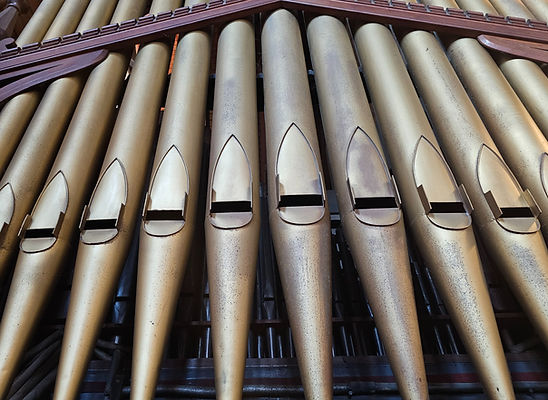
PARISH ORGAN RESTORATION
WE HAVE JUST RECEIVED AN AMAZING LEGACY OF £100,000 TOWARD THE RESTORATION OF THE PARISH ORGAN, AND LAUNCHED AN APPEAL TO RAISE THE REMAINING £40,000
NEEDED BEFORE THE END OF MARCH 2026.
Read on....
There are currently two pipe organs at St Saviour's. The larger and more modern instrument is the property of the St Albans International Organ Festival and the work of Peter Collins. It has has been housed at St Saviour’s by agreement since 1989, and thereon became the principal organ accompaniment for services. The Victorian organ dating from 1898 is situated in the chancel, and in recent years has been brought back into use for the Parish Mass each Sunday. Having not been used regularly for some time it is in need of substantial repair and costly renovation. Believing the care of the organ to be part of their responsibility as trustees, and committed to its ongoing use in worship and community events, in April 2021 the PCC established a working group to seek assessments and quotations, and have since made some minor repairs and begun to build up a fund to enable a full restoration. In his report to the PCC in November 2021 Andrew Lucas, the then Diocesan Organ Advisor and Master of the Music
at St Albans Cathedral concluded that the organ “certainly has the potential to be one of the best organs in the diocese”.
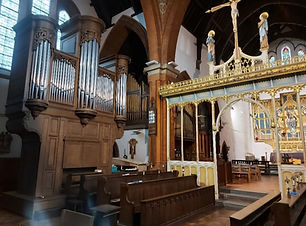
The IOF are in the process of arranging the permanent transfer of the Collins organ to St Paul’s, Knightsbridge after which we will resume a conversation with the Diocesan Advisory Committee and The Victorian Society about the removal of the existing choirstalls and plans to enlarge the Nave Altar Platform to maximise its use as a space for liturgical worship & performance, including a heated floor corresponding to the system installed in the nave in 2025.
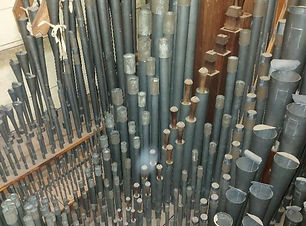
1988 - Saxon Aldred cleaned and overhauled the organ, undertaking further tonal revision, including re-regulation of the Swell reeds and Mixture, re-voicing of the Great Diapason Chorus, replacing the Great Open Diapason 2 with a 3 rank Mixture and making the Swell Contra Oboe additionally playable on the Pedal Division. A new blower was also installed.
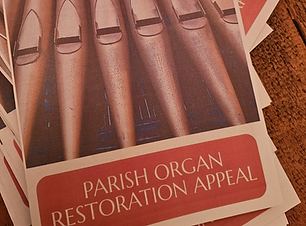
2025 - On Sun 13 Sept it was announced to the congregation that the church had received an incredible legacy of £100,000 from the estate of the late Sue Myerscough. Sue was a long-serving member of the parish choir, and a hard-working volunteer at the annual Beer & Fizz Festival and other community events. She had left instructions for a sum 'large enough to make a real difference' to be left to the Parish Organ Fund.

20 - 24 October 2025 - Gary and his team spent a week carefully dismantling the organ and preparing the many component parts for transferring to the workshop in Herefordshire where the real work begins!
Thanks to the team for their hard graft, and to Henry the Hoover who was exhausted! You can see some photographs of the REMOVAL here.
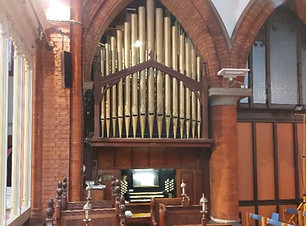
1898 - The original organ was built by Nicholson & Co, with tracker key action, mechanical drawstop action and pneumatic pedal action.
1928 - Henry Speechley cleaned and overhauled the organ and added 2 stops to the Swell (Voix Celeste 8ft and Contra Oboe 16ft) via a pneumatic ventil mechanism and a derived Acoustic Bass 32ft to the pedal division. An electric blower was also installed.
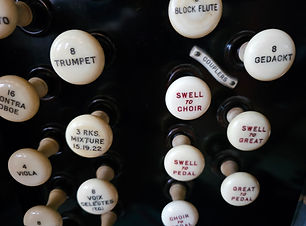
2022- Nicholson & Co, the original builders of the 1898 instrument were asked to assess the current state of the organ and advise on its restoration. Their quotation was based on restoring the organ to its original settings (which had been adapted over the years to better suit the building). This would involve a complete rebuild offsite, with a total cost in excess of £246k.

2025 - Prior to the announcement, the churchwardens had requested a revised cost of the five-stage restoration outlined in 2023. In order to finish the project by the end of the 2025/6 financial year (and so be able to reclaim tax from the Listed Places of Worship Scheme) the full cost is now £140,762. We have immediately launched a fundraising appeal for the outstanding £40,000!

December 2025 update - no time is being wasted at the GO workshop in Herefordshire, as the latest photo update shows. You get bonus points if you know which bit is which...and where it all fits back together!
You can see some images from the WORKSHOP here.

1952 - Henry Willis & Sons undertook a cleaning & overhaul, adding a balanced Swell pedal, a new radiating and concave pedalboard, new ivory drawstops on angled jambs (in the Willis style), the Great Lieblich Bourdon (which was the former Swell Bourdon 16ft) was made available on the Pedal division as well at 16ft, 8ft and 4ft pitches, Mixtures were added to both Swell and Great divisions as well as other tonal changes.
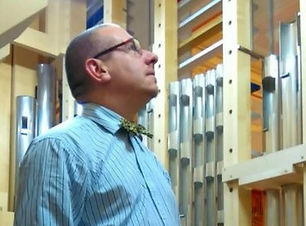
2023 - GO Organ Builders revisited a report commissioned by the PCC in 2015, and updated their costings outlining a five-stage restoration programme. The total cost was then estimated at £111,220 (plus VAT).

2025 - You can download a PDF copy of the Restoration Appeal leaflet here or at the top of this page. If you are able to help us raise the last £40,000 we would be grateful for donations of any amount. You can make a direct bank transfer to the PCC's Business Premium Account using the reference 'ORGAN'.
St Saviour's Parochial Church Council
Account No: 23540324
Sort Code: 20-74-12
